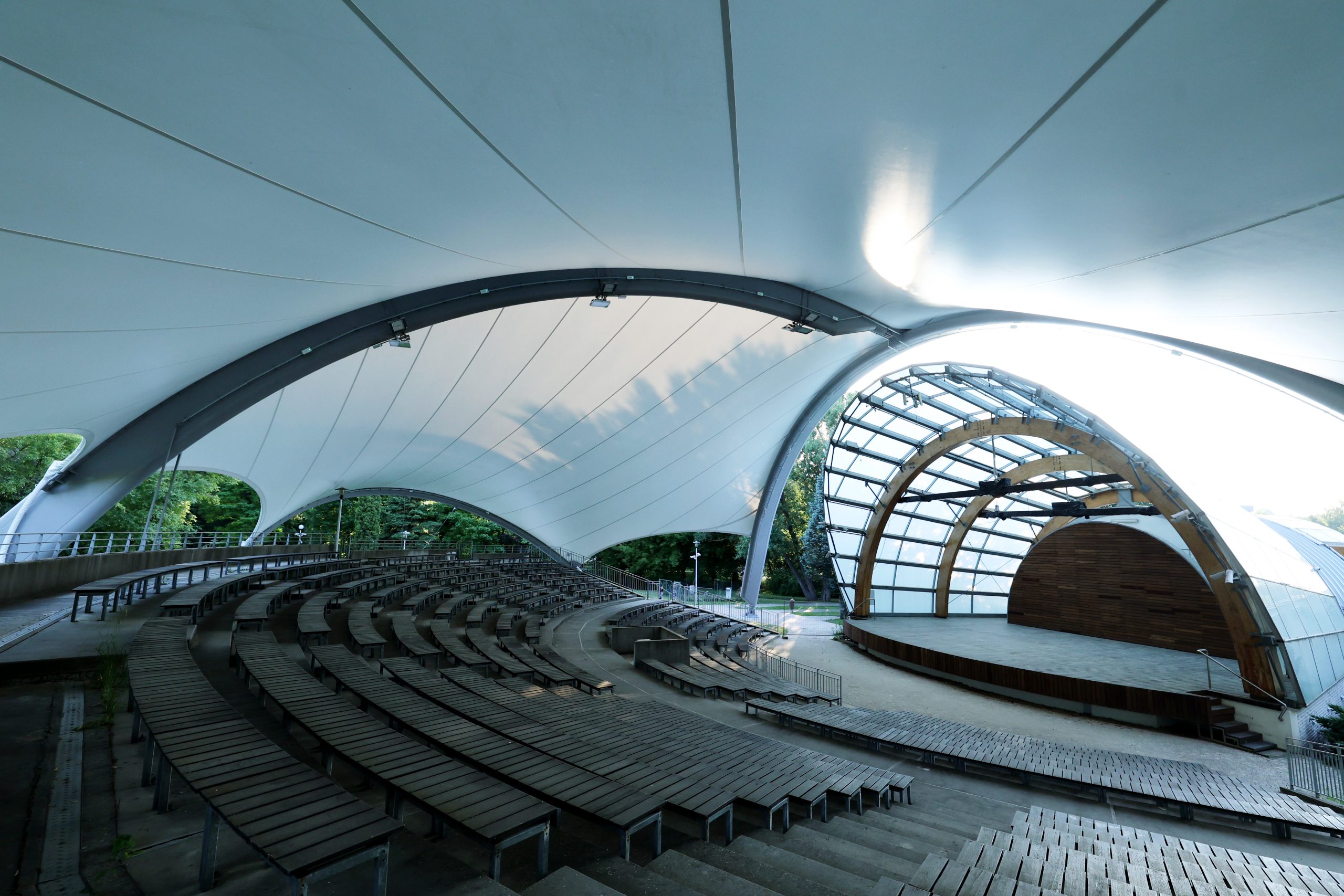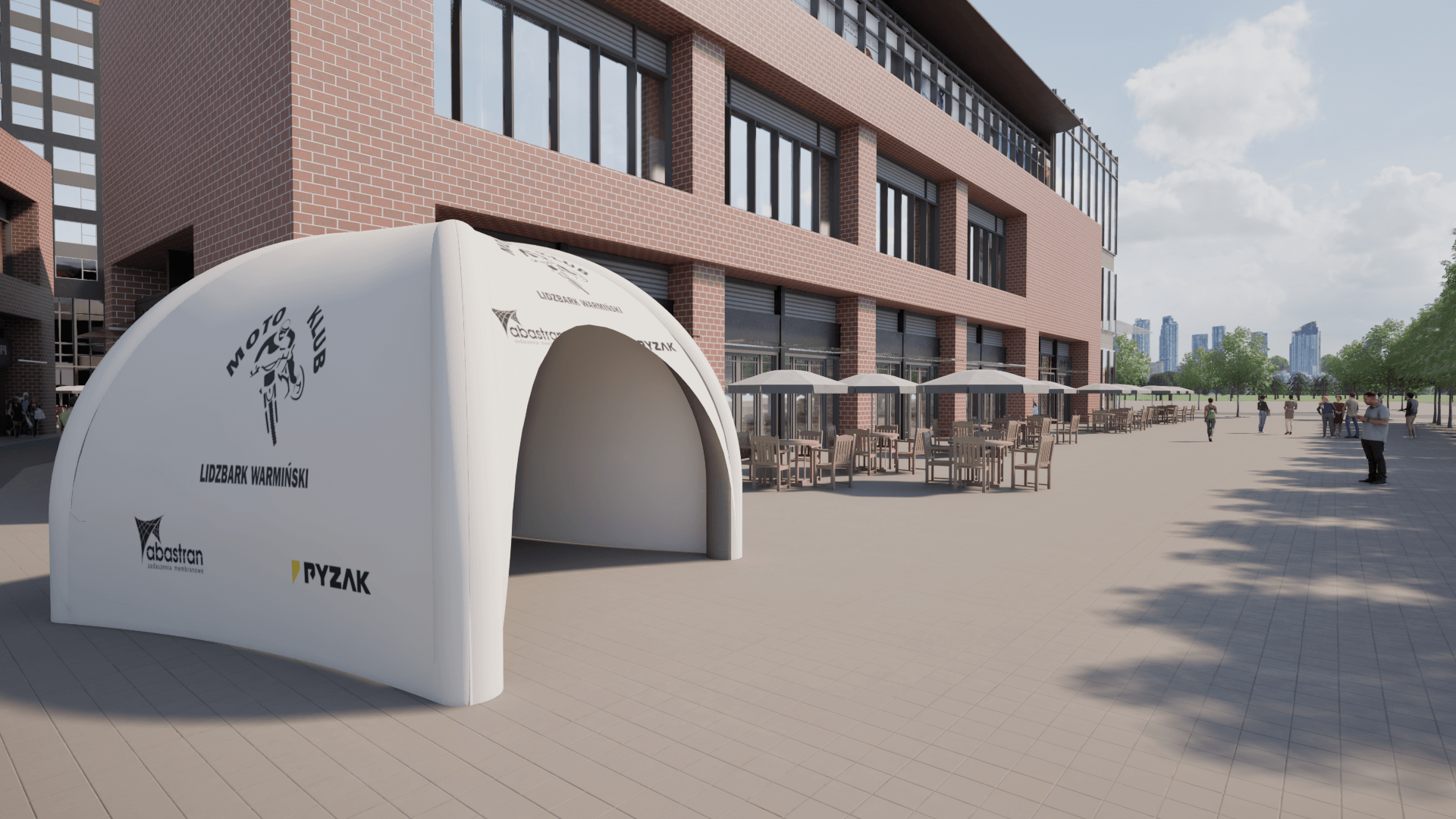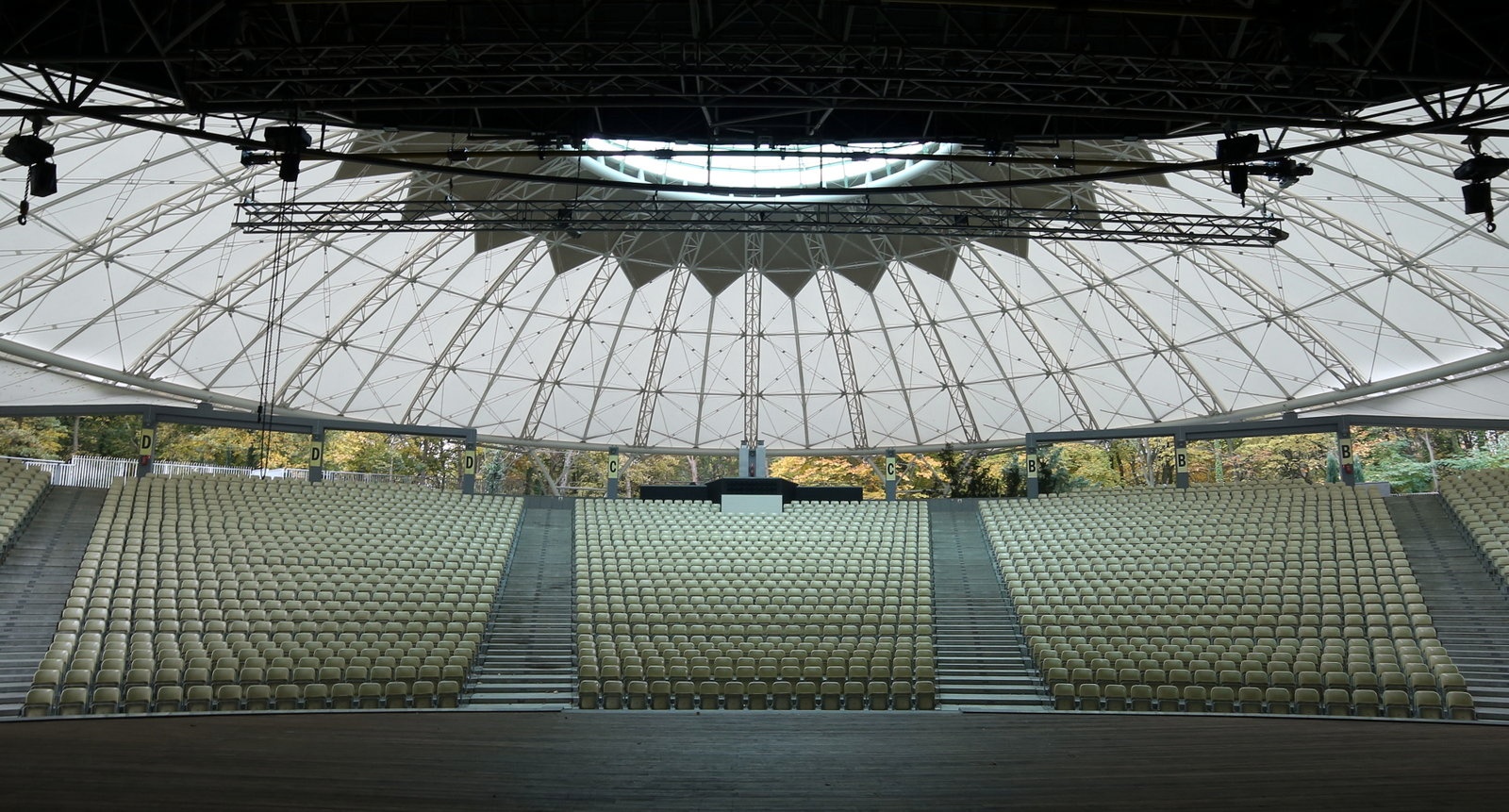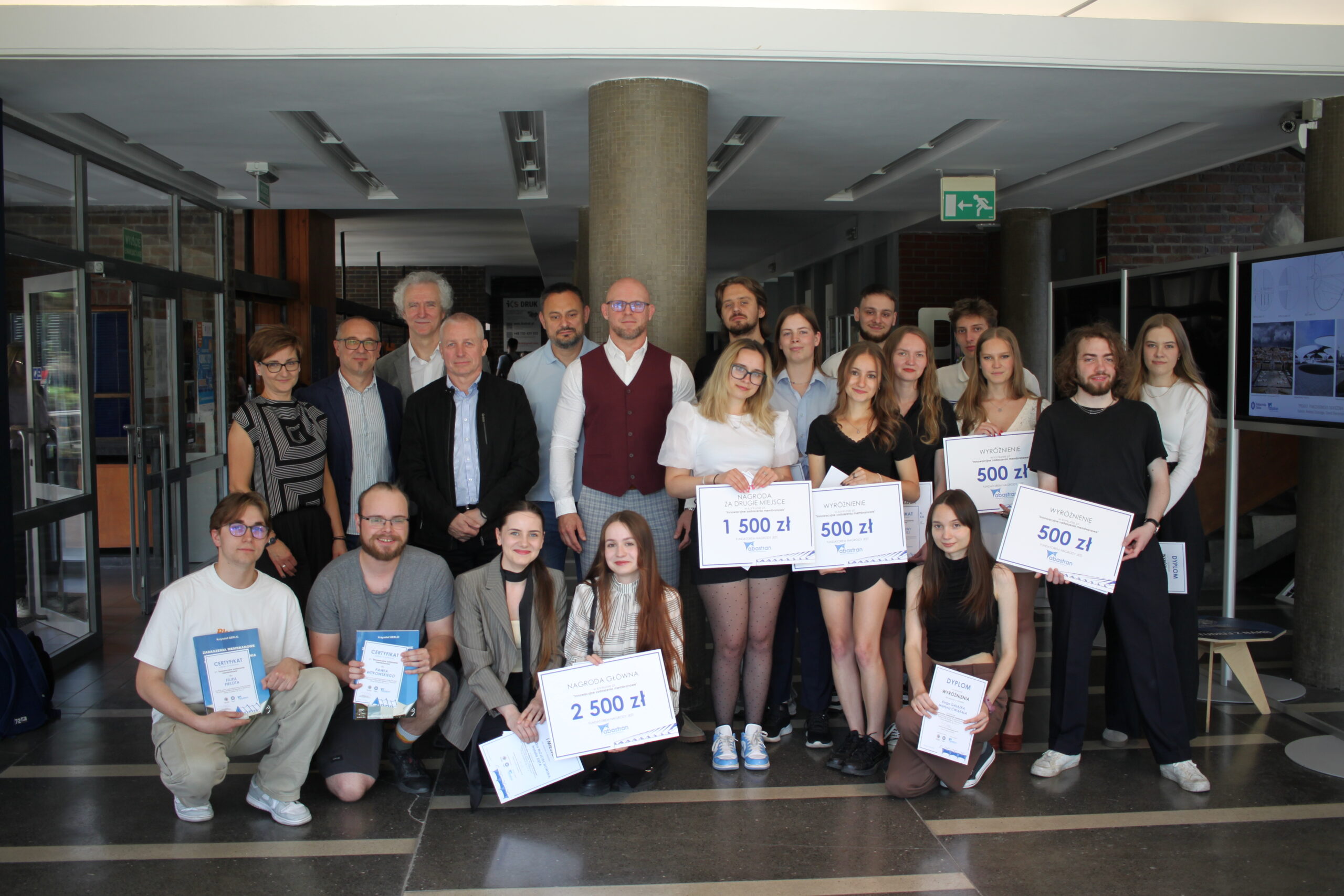
How Do Membrane Structures Affect Sound?
You’ve probably noticed how membrane structures are transforming the face of modern architecture. Their lightness, fluid lines, and almost unlimited potential for shaping space inspire architects and investors worldwide. When building amphitheatres, performance halls, or covering city squares, we choose membranes not only for their aesthetics or protective function. It turns out that these modern materials can actively shape the acoustics of a space, which is crucial for comfortable event reception. After all, excellent sound is the foundation of a successful concert, spectacle, or even a public speech.
What are Membrane Structures?
Simply put, membrane structures are technologically advanced coverings whose main element is a special fabric or film, tensioned over a supporting structure. Imagine a sail – the principle is similar. Proper tension and giving the membrane a characteristic, double-curved shape (resembling a saddle) make it stable and capable of bearing loads such as wind or snow. This allows us to create lightweight yet durable membrane canopies with impressive spans.
The key to success is selecting the right material. In our projects, we most often use three basic types of membranes:
- PVC (polyvinyl chloride): A popular and versatile material offering a good quality-to-price ratio. It’s flexible and available in a wide range of colors.
- PTFE (polytetrafluoroethylene, or Teflon): Glass fiber fabrics coated with PTFE are characterized by exceptional durability, resistance to dirt (they are practically self-cleaning), and UV radiation. This is a long-term solution.
- ETFE (ethylene-tetrafluoroethylene): This is a transparent film, extremely light and resistant. It allows for the creation of “glass” roofs without the weight and fragility of traditional glass, letting in plenty of natural light.
Material selection isn’t just a matter of aesthetics, durability, or budget. Each of these materials interacts differently with sound. At Abastran, we have extensive experience working with each of them, choosing the optimal solution for the specific project and client’s expectations, including acoustics. The goal is for the final structure to be not only beautiful and functional but also to provide optimal acoustic comfort.
How Do Membranes Affect Sound in Amphitheatres?
Due to their lightness and specific construction, membrane structures interact with sound waves differently than heavy, traditional materials. They can reflect sound, partially absorb it, or transmit it, and the final effect depends on many factors:
- Type of membrane
- Its tension
- Shape of the entire structure (the most important factor)
This is precisely why designing acoustics in membrane-covered facilities requires special attention, especially in places like amphitheatres, where sound clarity and intelligibility are a priority.
Canopy geometry is of fundamental importance here. We must be careful with concave shapes, which can act like a lens, focusing sound in one spot and creating an unpleasant echo or uneven sound reinforcement for the audience. The most important aspects of geometry:
- We prefer forms with double anticlastic curvature (saddle shape)
- Such forms naturally disperse sound waves
- They provide more even sound throughout the space
By appropriately modeling the shape of the membrane, we can even subtly amplify sound and direct it towards the audience, improving audibility without excessive use of loudspeakers.
Another important aspect is reverb control. Too long a reverb time causes sounds to overlap, and speech becomes unintelligible. Membranes themselves are not strongly sound-absorbent materials, especially for low frequencies. However, by using appropriate solutions, we can effectively manage reverb:
- Perforated membranes
- Multi-layer systems with additional acoustic insulation
- Appropriate spatial shaping
Designing acoustics under a membrane is a complex process. Therefore, we always recommend:
- Using advanced computer simulations
- Close collaboration with an experienced acoustician
- Conscious decision-making regarding materials and form
This allows us to minimize the risk of problems and create facilities with truly good acoustics.
Do Membranes Protect Against Noise? About Acoustic Insulation
When we think about acoustic comfort, not only the sound quality inside the facility is important, but also protection from external noise and limiting sound escaping to the outside. Can lightweight membrane structures provide adequate acoustic insulation? The answer is yes, but it requires the use of appropriate solutions.
A single membrane layer, due to its low mass, has limited sound attenuation capabilities, especially for low frequencies. Significantly better results are achieved by using multi-layer systems:
- Two or three membrane layers separated by an air gap
- The gap filled with sound-absorbing material (e.g., special wool)
- Specialist acoustic membranes with a perforated structure
However, remember that even the best materials won’t work if the structure isn’t airtight. Potential problems:
- Leaks at the connections between the membrane and the supporting structure
- Installation penetration points
- Lack of mounting precision
Therefore, we attach great importance to mounting precision and the use of dedicated sealing systems. Only in this way can we guarantee that the entire membrane barrier will act as an effective acoustic barrier.
Remember that every project is different. There are no ready-made recipes for ideal acoustics under a membrane. The key is an individual approach, flexibility, and openness to innovation. At Abastran, we combine our engineering knowledge with experience in realizing complex membrane projects, always prioritizing the client’s needs and the quality of the final result. If you are considering using a membrane structure in your project and excellent acoustics are important to you, we invite you to consult with us – our experts will help you find the best solution.

Advertising Tents as an Investment – How to Increase Brand Recognition at Events?


Competition for Innovative Membrane Roofing – Results and Inspirations
This year, we had the pleasure of organizing a competition together with the Faculty of Architecture at the Silesian University of Technology for 6th-semester students to design innovative membrane roofing. The award ceremony, held at the Faculty of Architecture in Gliwice, was the culmination of the young designers’ creative and technical journey.








